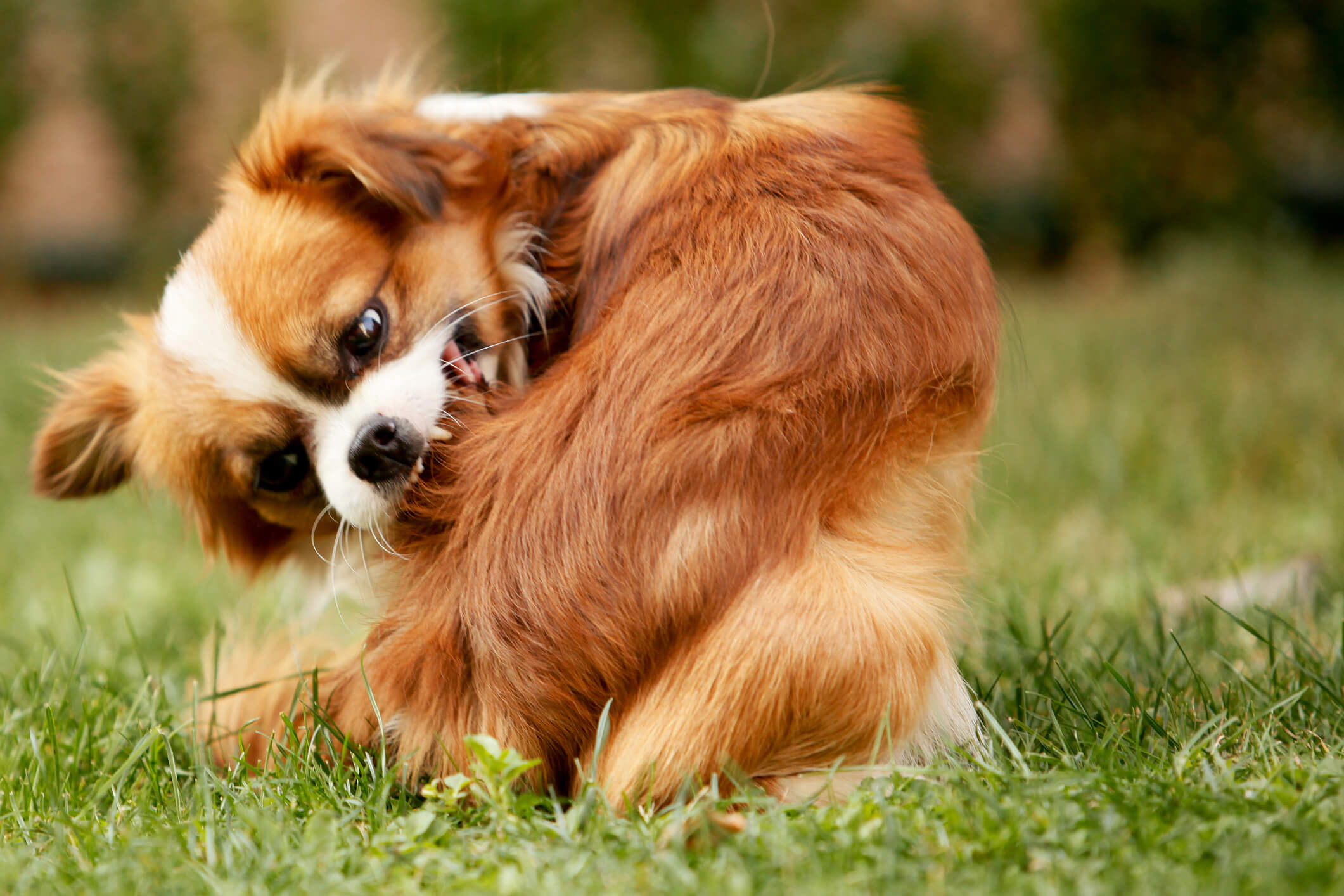
How to Spot the Signs of Seasonal Allergies in Dogs
Allergy symptoms in dogs are easy to spot. Recognizing when to step in and help is the hard part. Seasonal allergies are rarely fatal, but cases that go untreated can quickly become worse.
Play it on the safe side and seek veterinary guidance as soon as your dog’s symptoms begin to develop. Only then can you take the necessary steps to keep your dog’s allergies under control. Take a moment to familiarize yourself with the most common signs of seasonal allergies in dogs and what you can do to help mitigate them.
Signs your pup might have allergies
Dogs exhibit many of the same seasonal allergy symptoms as humans. Many pet parents struggle with allergies themselves, making it easy to identify when their fur babies are struggling, as well.
Here are the most common signs to look out for:
- Red, swollen and itchy skin: Dogs can’t talk to owners about their skin irritation. Thankfully, this symptom is pretty easy to spot. Seasonal allergies cause swollen, itchy rashes around the paws and ears. Less common areas of the body that might itch include the groin, underarms, ankles and snout.
- Hair loss in targeted areas: Constantly scratching irritated skin can lead to hair loss in the places mentioned above. Dogs with allergies often have patchy bald spots, while the rest of their coat appears healthy. Hair loss combined with redness and swelling is a clear indication that seasonal allergies are to blame.
- Smelly odor and discharge: All that scratching, biting and licking can whittle away your dog’s skin. Seasonal allergies left untreated could eventually lead to a secondary infection at the affected site. Bacterial and yeast infections are hard to ignore—they’re characterized by a foul-smelling odor and yellowish-white discharge.
- Leaky eyes and nose: Dogs with seasonal allergies can also develop itchy, watery eyes. Many experience sneezing and a runny nose, which are often dismissed as cold symptoms that will clear up on their own. However, these symptoms will usually persist for the duration of the allergy season. One huge difference is that sinus infections produce green or yellow mucus, while allergies often produce clear mucus.
Tips for preventing allergic reactions
Unfortunately, there’s no cure for seasonal allergies—but there are still plenty of ways to help! The following natural at-home remedies have been shown to significantly reduce allergy symptoms in dogs.
- Avoid allergy triggers: The best treatment a pet parent can offer their allergic dog is to minimize contact with allergens. Pollen and grass are inevitable parts of a dog’s environment, but reducing their exposure is the only way to prevent an allergic reaction. Schedule walks when the pollen count is low and regularly install new air filters in the home. Identify and eliminate mold spores that may develop near areas with high levels of moisture, like the basement or bathrooms.
- Give them a fatty acid supplement: Nutrition plays a key role in combating seasonal allergies. A daily supplement that contains omega-3 fatty acids can reduce the appearance of skin irritation and help your pup grow back a thick, shiny coat. These types of supplements are usually available in the form of fish oil, which owners can mix in with the dog’s regular food. Your vet might also recommend therapeutic commercial food or a supplement that fights allergy symptoms and boosts the immune system.
- Wipe off their fur: Dogs accumulate pollen and grass in their fur after spending time outside. These allergens get tracked into the home, making your pup sneeze long after play time at the dog park. Before they return indoors, clean off your dog with a baby wipe or damp cloth to remove allergens. Key areas to clean include their paws, face and belly fur because these parts of the body come in contact the most with environmental irritants. Unsurprisingly, the paws and face are also where owners are most likely to find itchy rashes.
- Lather with oatmeal shampoo: In addition to wiping down the dog’s coat, pet parents need to bathe allergic dogs regularly. This will more thoroughly clear away pollen and grass that gets trapped in the fur. Baths should occur more frequently during peak allergy seasons. About once a week, lather your pup with a vet-certified oatmeal shampoo to soothe irritated skin. Rinse with lukewarm water—extremely hot temperatures can actually make rashes worse!
Many allergic pups are forced to muddle their way through spring and fall. Pet parents can give their dogs the outdoor experience they deserve by practicing these natural remedies as soon as symptoms begin. Seasonal allergies shouldn’t be ignored—the symptoms will subside eventually, but they always come back. Stay attentive and prioritize your pup’s allergies as much as your own!



